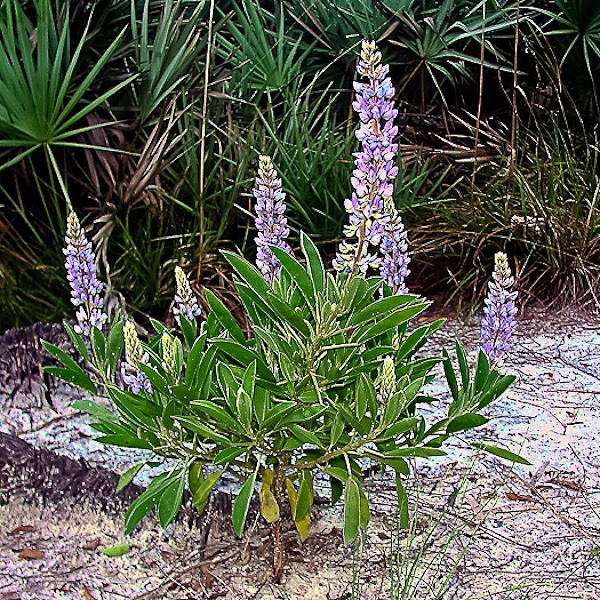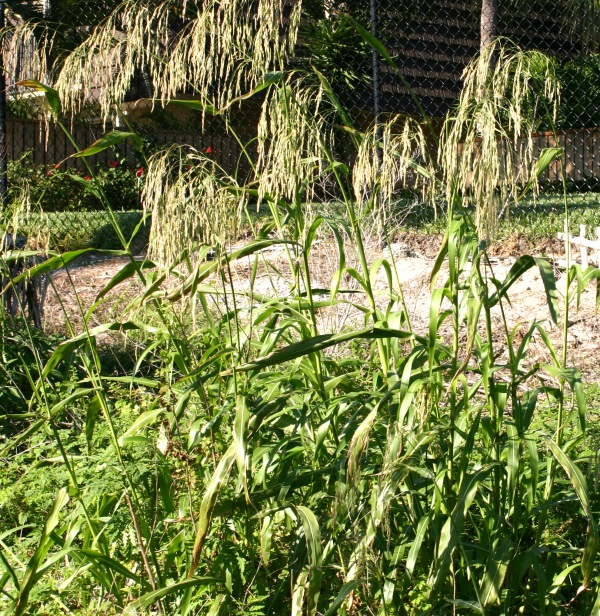John and George venture out to botanize and photograph on Friday mornings. Not yesterday, however. George had much more fun. The morning was spent in a faculty meeting with 80 colleagues hanging eagerly on every word of a passionate three-person debate of, “should the Health Class be a General Education course or merely required for graduation.” About an hour in, cyanide pills came to mind. Fortunately they were not dispensed with the leftover Christmas Cookies, and thoughts of cyanide are best channeled botanically to words on cyanide-bearing plants. Ability to smite herbivorous foes with cyanide is scattered liberally across the plant world, from fern fiddleheads to Laetrile from apricot pits.
Now, pondering Health Class and cyanide together, a question comes to mind: isn’t it unhealthy for a plant to sequester cyanide? It’s a wicked poison to any living thing. Cyanide stomps down basic respiratory metabolism, so how does the plant avoid trouble? Some plants have self-protective enzymes. But a more interesting adaptation resembles avoiding trouble with epoxy glue…no action until key ingredients combine. In cyanide-producing plants, the cyanide precursors are attached to sugar molecules. They are safe until a bunny munches the leaf, allowing the precursors to encounter enzymes able to nip off the sugars and release deadly cyanide gas. A booby trap for herbivores it is.
As with certain nations, the defense budget can become self-defeatingly costly. That cyanide nuclear arsenal can be a burden, so cyanide-bearing species often have mixed cyanide-producing and defenseless strains. Sweet and bitter yuca (manihot, cassava), lima beans, and almonds are culinary examples. True also in clovers.
Clovers and other legumes capture their own nitrogen via nitrogen-fixing bacterial companions. Cyanide is nitrogen-intensive. Consequently many legumes are sufficiently nitrogen-rich to invest in cyanide. This is well studied in clovers, because they are pasture plants. And here is a toxic twist: frost damage allows that “epoxy glue” activation to cause clover self-poisoning. Clovers at cooler latitudes are thus less likely to be cyanide makers than their hot-climate kin. No doubt true also in less-studied species, including grasses.
Symbiotic relationships between grasses and nitrogen-fixing bacteria have come increasingly into focus in recent times. Long story short: as with legumes, grasses are turning out to be remarkably talented nitrogen-getters, and some have the cyanide to show for it. There was a recent flurry of attention to cow-snuffing Bermuda Grass, blamed by folks not aware of grassy cyanide on GMO-ness (the grass was not GMO). CLICK
Bamboos can generate enough cyanide to kill a human, yet Golden Bamboo Lemurs and Pandas dine with impunity, perhaps by having enzymes able to convert cyanide to harmless amino acids?
- Johnson Grass (JB)
So then, what about wild cyanide in Florida? One local example is Johnson Grass, Sorghum halpense, a large weedy wetland grass introduced into the U.S. perhaps as fodder. It is dangerous to livestock, especially when nitrogen-fertilized, frosted, or otherwise damaged physically.
To end on a curious note, why do plant enthusiasts so often want to eat the wild plants, as though “natural” = safe? Toxicity can work at low insidious levels, rather than simplistic “keel over and convulse.” It would be an eye-opener to research and list every cyanide-producing species in Florida. And watch out for those Lima Beans!




SmallHouseBigGarden
January 4, 2014 at 11:24 am
“botanize:” my new favorite word!
Also, I’ve never known what Sorghum halpense/Johnson grass was called: I see it all the time here and refer to it as “those long reedy things that look like wheat” Thank you for botanizing me!
George Rogers
January 5, 2014 at 2:28 pm
After your comment I got worried. The distant shot of Johnson Grass I had used upon posting the blog suddenly looked suspiciously like possibly Phragmites, so I went back and replaced it with a more securely identified, closer, photo. You may have saved me from a booboo!
George Rogers
January 4, 2014 at 11:38 am
Pretty grass isn’t it? And big & tough. You might also be seeing Phragmites, tall and reedy and a little wheat-ish. Johnson Grass is usually, ohhhh, let’s say 5-6 feet tall, compared with maybe 7-13 feet in Phragmites. You see a lot of Phragmites in freeway median strips.
Kathy
January 4, 2014 at 11:46 am
I’m really enjoying these posts – l love how you teach via humor. Will pass this along to some fellow Chicago-region young botany wonks I know. : )
George Rogers
January 4, 2014 at 12:28 pm
Thanks! Somewhere in the catacombs I have a copy of the wonderful “Flora of the Chicago Region” (or similar title) by Floyd Swink up there. Sure would be fun to explore the botany of the Chicago Region…but not this week!
Laure Hristov
January 5, 2014 at 12:51 am
Great post humor and all!
George Rogers
January 5, 2014 at 2:21 pm
Thanks Laure. See you before long no doubt I hope.
Mary Hart
January 5, 2014 at 5:50 am
Sambucus nigra is widespread in UK. Important for cordials, wines and using both flowers annd berries. Also vital for wild birds in autumn. I have a large one over the garden fence.
George Rogers
January 5, 2014 at 2:21 pm
Wish I could come see it! I’m always fascinated with plants (genera or species) in the UK and in Florida. Diverse weeds, Elderberry, Phragmites, and …?
Steve
February 5, 2014 at 11:56 am
Your mother was a hamster, and your father smelt of Elderberries!
I knew an old Florida Cracker lady who made pies from elderberries. One of her son’s couldn’t stand them. Apparently elderberry is like Saccharin in that for some folks it tastes bitter, and others don’t notice any bitterness.
Continuing on the Monty Python reference, now for something completely different. Do you know if cooking eliminates the cyanide?
George Rogers
February 5, 2014 at 12:46 pm
Here is my guess (only a guess): cooking probably gets rid of it, because cyanide volatilizes when heated, I think, but I’m not really qualified to say.
Mike Nalywajko
February 27, 2014 at 1:48 pm
There are a few other plants and fruits as well that have traces of cyanide such as apple seeds. I don’t understand why nature is so scary but I’ll stick to what I know.
George Rogers
February 27, 2014 at 2:13 pm
You could say most plants have an incentive to discourage herbivores, and they have had a few million years to get good at it. That’s why I make a point of not eating the weeds.